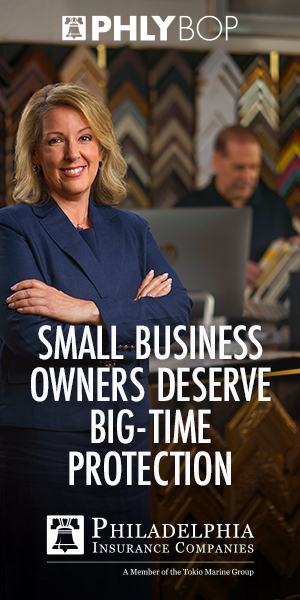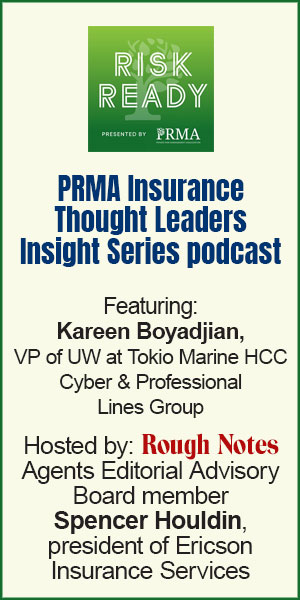 Showing gratitude for artificial intelligence
Showing gratitude for artificial intelligence
Just as Rosey handled the Jetsons’ chores … ,
AI can support us and our agencies by freeing us from drudgery so we can focus on impact.
By Carolyn Smith, APR, CRA, TRA
Back in 1962, families gathered around their TVs to watch The Jetsons, a shiny, futuristic world filled with flying cars, robot maids, and automated everything. At the heart of that home? Rosey the Robot. Debuting on ABC on September 23, 1962, the sitcom introduced Rosey as the ultimate household helper: cheerful, tireless, and devoted to making life easier so her humans could focus on what really mattered.
Sixty-plus years later, Rosey doesn’t feel so far-fetched. Artificial Intelligence has stepped off the cartoon screen and into our offices, completely reshaping industries like insurance and risk management. While headlines often spotlight disruption, this November we’re choosing a different lens: gratitude.
- Gratitude for the way AI tools free us from repetitive, time-consuming tasks
- Gratitude for the chance to redirect energy into what truly matters—building trust, deepening relationships, and guiding clients through complex risks
Just as Rosey handled the Jetsons’ chores so that Thanksgiving dinner didn’t burn, AI can support us and our agencies by freeing us from drudgery so that we can focus on impact.
AI and the gift of time
As the year winds down, Thanksgiving invites us to pause and give thanks. In the insurance and risk management world, one of the biggest opportunities for gratitude heading into 2026 is the role of AI.
Too often, AI sparks fear. Employees wonder: Will I be replaced? Leadership worries that relationships and trust—the heart of the agency—will be lost in automation.
But Thanksgiving teaches perspective. AI isn’t here to replace empathy, creativity, or judgment. It gives us the gift of time.
Think of the hours once lost to data entry, formatting spreadsheets, chasing certificates, or sending reminders. Like peeling potatoes for Thanksgiving, these tasks are necessary but never the highlight of the feast.
“AI’s greatest gift isn’t efficiency for the sake of efficiency—it’s the time dividend,” says Joseph Hughes, performance officer at Flatlands Jessup and co-chair of the BIGN Technology Board. “The hours it gives back are hours we can reinvest in listening, coaching, and building trust with team members, clients, and even underwriters! Ironically, artificial intelligence’s greatest gift as of now is improved emotional intelligence.”
This is where AI shines:
- Automates workflows like claims tracking and policy comparisons
- Drafts communications, from renewals to prospecting emails, so humans can personalize them
- Quickly identifies emerging risks
- Provides insightful research about prospective clients and their industries before a first meeting
- Educates clients with custom content that builds trust
- Equips leaders with dashboards to simplify strategy
Each AI tool is like setting the table in advance. It frees us to enjoy the main course: human connection.
Let’s shift the mindset. AI isn’t a threat; it’s a teammate. It handles the chores so we can serve, mentor, and grow.
“I think it’s like how people must have felt when we were still mailing letters, using encyclopedias, and going to the library to look things up on paper,” says Emily Koleno, director of operations at Associated Insurance. “Then, suddenly, the internet came out. Email became a thing. And everybody probably thought, ‘What? We’re going to send messages through a computer? We’re going to look things up on a computer? That’s ridiculous!’
“Now it’s just what we do. We can’t imagine our jobs without it. I think AI will be the same five years from now, maybe less, maybe more. It’s going to be everywhere. We’re going to use it more and more.”
AI isn’t magic. It’s your new Rosey—a powerful team member that’s smart, fast and helpful, but only if you give it the right input. Treat it like a teammate and you’ll get more time to focus on what matters most.
Why this matters
Founder-led marketing used to feel innovative. Now it’s table stakes. People don’t want polished corporate scripts; they want a human voice. Whether you’re a producer, agency owner, or team leader, your personal brand has become one of the most valuable assets you have. Distribution builds awareness, but trust is what converts.
AI is showing up everywhere in this conversation—especially around content. Leaders are using it for LinkedIn posts, newsletters, and client communications. The upside? Speed, scale, and consistency. The risk? Generic, soulless writing that makes you sound like everyone else.
Hughes puts it well: “AI won’t replace your voice. But it will amplify whatever you put into it— good or bad. If you feed it clarity and direction, it gives you leverage. If you don’t, it just gives you noise.”
How to get it right
When you start using AI, think like a manager onboarding a new hire:
- Your best examples. Share posts, campaigns, or emails that worked. Let AI see what “good” looks like for you.
- Your context. Who you are, whom you serve, and what your clients actually care about. Without this, it’s just guessing.
- Your preferences. Spell out tone, voice, pacing, and the things you never want to see in your content. (AI doesn’t know your pet peeves unless you tell it.)
AI won’t hand you brilliance on autopilot. But if you treat it like a trusted teammate—one you invest in, train, and direct—it can give you the leverage to scale your voice and free up your time.
The real win? Spending less energy on drudgery and more time building relationships, trust, and impact—the things only you can do.
Strategic coaching in the age
of AI
In most organizations, innovation rarely shows up with flashing lights. More often, it arrives in the form of a thoughtful question or a curious experiment. That’s where Dave Berndt comes in. As vice president of human relations at Nottingham Insurance and co-chair of the BIGN Technology Board, Berndt has a knack for peering into the future and a gift for bringing ideas to life.
While some leaders tread carefully around artificial intelligence, Berndt jumps in headfirst and wide-eyed with imagination, rigor, and purpose. He’s not chasing shiny objects. He’s building something useful: a suite of customized generative pre-trained transformers (GPTs) that channel the voices of iconic strategic thinkers—not to replace human wisdom but to sharpen it.
His current “thinking team” includes Dan Sullivan (Strategic Coach), Chris Voss (author and FBI negotiator), Tamsen Webster (narrative strategist), and Dan Koe (futurist-creator). These aren’t books on a shelf; they are active, thinking tools—interactive GPTs trained to speak, prompt, and challenge in their respective voices. When Berndt tackles a business problem, he doesn’t read about these experts; he spars with them.
- Dan Sullivan pushes expansion. The Sullivan GPT challenges Berndt to think bigger—10x goals, unique ability, “who” not “how.” When Berndt maps a growth initiative, he’s nudged to simplify the strategy, elevate what he does best, and delegate the rest.
- Chris Voss brings empathy to the table. His GPT reframes negotiation—not as combat, but as curiosity. Berndt uses it to navigate tough conversations with calibrated listening, tactical empathy, and nuance.
- Tamsen Webster’s Red Thread GPT connects dots that others miss. Strategy often dies in abstraction. But with Tamsen’s lens, Berndt weaves belief, change, and narrative into one cohesive line of thought—turning ideas into action that people can follow.
- Dan Koe stirs up creative leverage. His GPT reminds Berndt to think like a digital builder: take complex insight, simplify it, systematize it, and scale it—all without burnout.
But the magic isn’t in the novelty. It’s in the application. Berndt doesn’t use AI for shortcuts—he uses it to stretch his thinking. When rolling out a new client engagement model, he’ll run it through Sullivan for growth and delegation, Voss for tactical empathy and negotiation, Webster for narrative clarity and audience fit, and Koe for digital leverage and scalability. The result is a strategy that’s bold in vision, clear in message, human in tone, and built to scale.
This isn’t about replacing mentors; it’s about showing up sharper, more prepared, and more thoughtful. For Berndt, AI becomes a thinking partner that removes friction, amplifies insight, and creates space for what truly matters: trust, relationships, and meaningful results. The future of leadership may not belong to those with all the answers, but to those who keep asking better questions—in the voices that shaped the greats.
Gratitude for progress
As we enter the season of Thanksgiving, it’s worth pausing to recognize how far we’ve come—from Rosey the Robot, a fictional cartoon character, to AI tools that are re-shaping our reality. Rather than fearing what’s next, let’s be thankful for the ways technology allows us to focus on what no machine can replace: authentic human relationships, thoughtful risk guidance, and the trust we build with our clients and teams. This November, may we lead with gratitude—for the tools that make us better, and for the people who make our work meaningful.
The author
Carolyn Smith, APR, CRA, TRA, chief training officer for Beyond Insurance, creates and delivers transformative programs, including the Trusted Risk Advisor certification, BIGN Producer Boot Camp, and Quest for Success, that have positively impacted the lives and careers of countless professionals. These programs help industry professionals build a career that they love and achieve the success they deserve.




